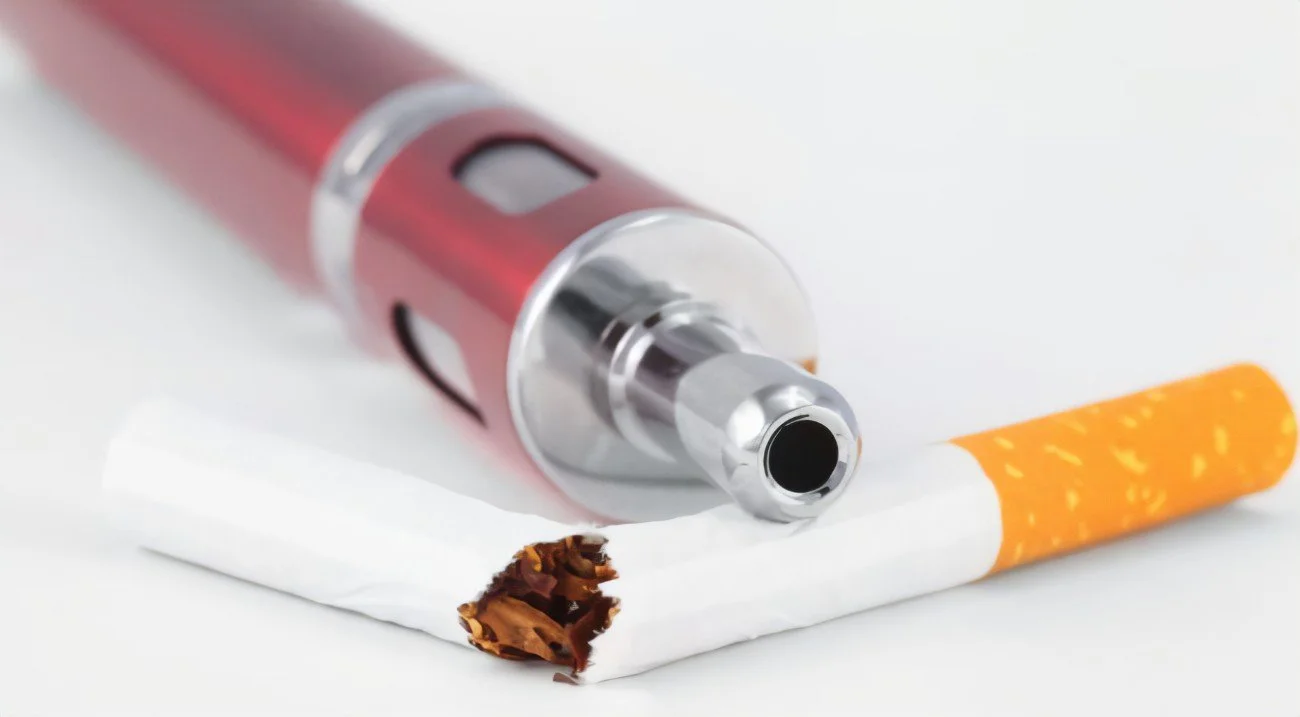Is Vaping Better Than Smoking
The debate over vaping versus smoking continues to rage on. While both involve inhaling substances, the potential health consequences differ significantly. This article delves into the science behind these two practices, exploring the potential benefits and risks associated with switching from smoking to vaping.
Vaping vs. Smoking: Is Vaping Better Than Smoking
Numerous studies have demonstrated that vaping is significantly less harmful than smoking traditional cigarettes. Unlike combustible tobacco products, vaping does not involve the combustion of tobacco, which produces thousands of harmful chemicals and carcinogens. Instead, vaping heats e-liquids to produce an aerosol (vapor) that is inhaled by the user. While vaping still delivers nicotine, it eliminates many of the harmful substances found in cigarette smoke, leading to reduced health risks for users.
What Happens When You Go from Smoking to Vaping?
Switching from smoking to vaping can significantly impact health outcomes, offering potential benefits alongside considerations for risk.
Reduced Exposure to Harmful Toxins
Vaping offers a significant advantage over smoking: a drastic reduction in exposure to harmful toxins found in cigarette smoke. Unlike combustible tobacco products, vaping doesn't involve burning tobacco, which generates thousands of chemicals, many known carcinogens. By eliminating combustion, vaping reduces intake of harmful substances like tar, carbon monoxide, and formaldehyde, leading to improved respiratory health and a decreased risk of developing smoking-related diseases.
Improved Respiratory Function
Many who switch from smoking to vaping report improvements in respiratory function, including reduced coughing, less phlegm production, and increased lung capacity. Vaping doesn't cause the same level of lung damage as smoking, which can lead to conditions like chronic obstructive pulmonary disease (COPD) and emphysema. However, it's important to note that vaping isn't entirely risk-free and may still pose respiratory risks, especially with long-term use or exposure to certain e-liquid substances.
Reduced Risk of Cardiovascular Disease
Smoking is a major risk factor for cardiovascular diseases such as heart attack, stroke, and peripheral artery disease. By switching to vaping, individuals can lessen their exposure to these harmful chemicals. While nicotine is addictive, it's not the primary culprit for smoking-related cardiovascular disease. Therefore, transitioning to vaping, which delivers nicotine without the harmful byproducts of combustion, may reduce the risk of heart disease and stroke over time.
Nicotine Dependency
While nicotine itself is less harmful compared to the toxins found in cigarette smoke, it's still an addictive substance. Individuals who switch to vaping may continue to experience nicotine dependency, leading to cravings and withdrawal symptoms if they attempt to quit vaping or reduce nicotine intake. However, vaping allows users more control over their nicotine consumption by adjusting the nicotine concentration in e-liquids, which can facilitate gradual nicotine reduction and eventual cessation.
Potential Risks of Vaping
Although generally considered less harmful than smoking, vaping isn't risk-free. It has been linked to certain health risks, including respiratory issues like bronchiolitis obliterans ("popcorn lung"), lung inflammation, and cardiovascular effects. Additionally, concerns exist about the potential long-term effects of inhaling chemicals in e-liquids, as well as the safety of certain flavoring agents and additives used in vaping products.
Switching from smoking to vaping can lead to significant improvements in health outcomes by reducing exposure to harmful toxins found in cigarette smoke. However, it's crucial to recognize that vaping isn't without risks and may still pose health concerns, particularly with prolonged or excessive use. Individuals considering switching to vaping should carefully weigh the potential benefits and risks and consult with healthcare professionals for personalized guidance and support.
How Many Puffs of Vape Is Equal to a Cigarette?
Estimating the number of vape puffs equivalent to a cigarette is difficult due to variations in vaping behavior, nicotine content, and individual factors.
Nicotine Content
A typical cigarette contains around 12 milligrams of nicotine, but not all of it is absorbed during smoking. On the other hand, e-liquids used in vaping come in various nicotine strengths, ranging from 0 to 50 milligrams per milliliter (mg/ml). A commonly used concentration is 5%, which translates to 50 milligrams per milliliter (mg/ml).
Absorption Rate
Nicotine absorption rates differ between smoking and vaping. Smoking delivers nicotine directly into the bloodstream through the lungs, leading to rapid absorption. In contrast, vaping delivers nicotine through inhalation of aerosolized vapor, resulting in a slower absorption rate.
Puffing Behavior
Vaping habits vary among users, including puff duration, frequency, and depth of inhalation. Some vapers may take shorter, more frequent puffs, while others may take longer, deeper draws.
Given these factors, it's impossible to provide an exact equivalent number of puffs between smoking and vaping. However, as a rough estimate, a vaper using a 5% nicotine e-liquid in a basic refillable pod device may need somewhere between 30 to 50 puffs to ingest a similar amount of nicotine as a single cigarette.
What Are the Cons of Vaping?
Addiction
Vaping can be addictive, especially for young people. The nicotine in vape juice can be just as addictive as the nicotine in cigarettes. This can lead to dependence and difficulty quitting.
Lung damage
Vaping can irritate the lungs and cause coughing, wheezing, and shortness of breath. In some cases, it can lead to more serious lung problems, such as popcorn lung (obliterative bronchiolitis) and EVALI (e-cigarette, or vaping, product use-associated lung injury).
Heart problems
The chemicals in vape juice can damage the heart and blood vessels. This can increase the risk of heart attack, stroke, and other cardiovascular diseases.
Brain development
Nicotine exposure during adolescence and young adulthood can harm the developing brain. This can lead to problems with learning, memory, and attention.
Exposure to harmful chemicals
Even though vaping doesn't involve combustion like smoking, the flavorings and other chemicals in vape juice can be harmful.
Can Your Lungs Heal from Vaping?
The extent to which lungs can heal from vaping depends on several factors, including the severity and duration of vaping, the specific substances vaped, and individual health.
Reversible Damage
Some vaping-induced respiratory issues can improve or even resolve entirely with proper medical treatment and quitting vaping. For instance, coughing, wheezing, and shortness of breath may disappear once vaping stops and the lungs have time to heal. Inflammation and irritation caused by vaping may also improve with appropriate medications and lifestyle changes.
Permanent Damage
However, certain types of lung damage caused by vaping may be irreversible or lead to long-term health complications. Vaping-related lung injuries, such as lipoid pneumonia or acute respiratory distress syndrome (ARDS), can cause permanent scarring (fibrosis) of lung tissue, impairing lung function and reducing respiratory capacity. Additionally, chronic exposure to vaping aerosols containing harmful chemicals and fine particles may contribute to the development of chronic obstructive pulmonary disease (COPD) or asthma, which can be irreversible and require ongoing management.
Individual Factors
Age, overall health, and pre-existing health conditions can influence how well the body recovers from vaping-related lung damage. Younger individuals and those with fewer underlying health issues may have a better chance of recovery compared to older adults or those with compromised lung function.
Prevention and Management
To minimize the risk of vaping-related lung damage and promote lung health, prioritizing prevention and early intervention is crucial. This includes avoiding vaping products containing harmful substances like vitamin E acetate or other contaminants, using vaping devices responsibly and as intended, seeking prompt medical attention for any respiratory symptoms or concerns, and adopting a healthy lifestyle with regular exercise, a balanced diet, and avoiding secondhand smoke and air pollution.
While some lung damage caused by vaping may be reversible with proper treatment and quitting, other types can be permanent or lead to long-term health problems. Preventing vaping-related lung injuries and promoting lung health requires awareness, preventive measures, and ongoing monitoring of respiratory health. Individuals concerned about the impact of vaping on their lungs should consult with healthcare professionals for personalized guidance and support.
Final Words
While switching from smoking to vaping offers a path towards potentially reduced health risks by minimizing exposure to harmful toxins, it's crucial to acknowledge that vaping isn't entirely risk-free. Long-term effects and the safety of certain chemicals in e-liquids remain areas of ongoing research. Ultimately, the decision to vape should be made with careful consideration of the potential benefits and drawbacks, with guidance from a healthcare professional for a personalized approach.

